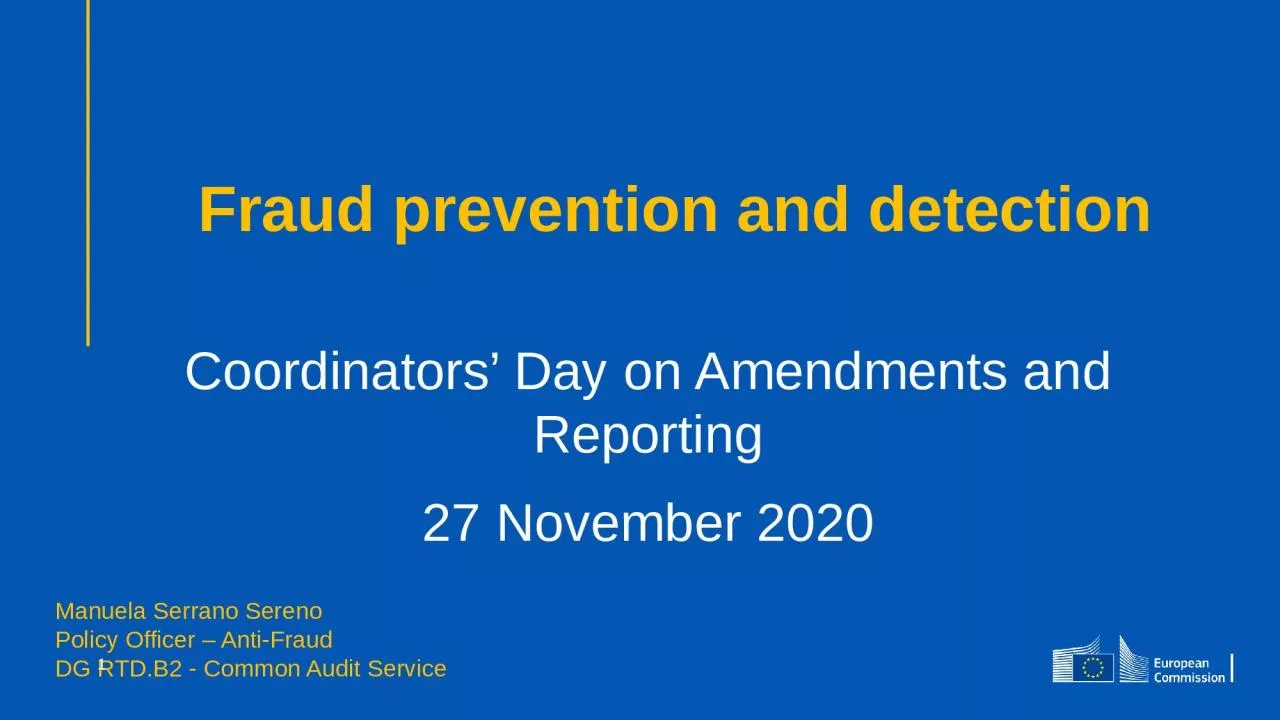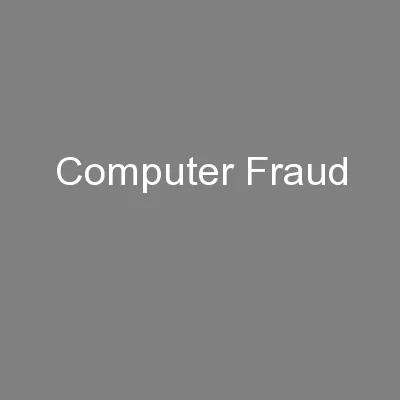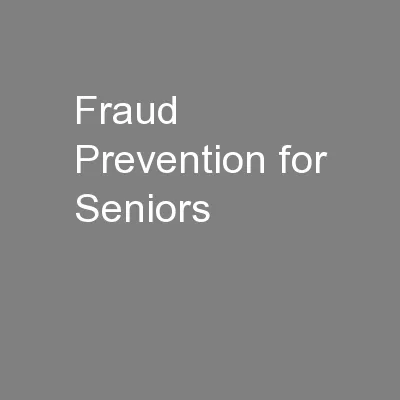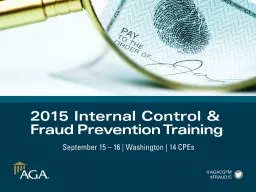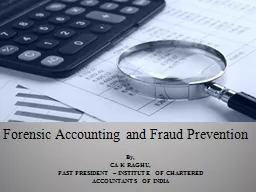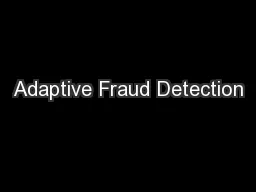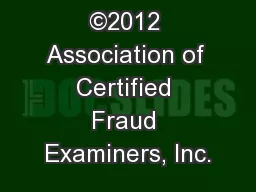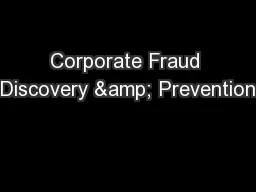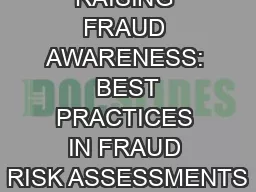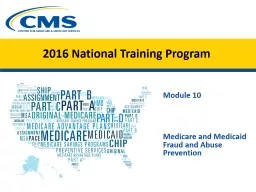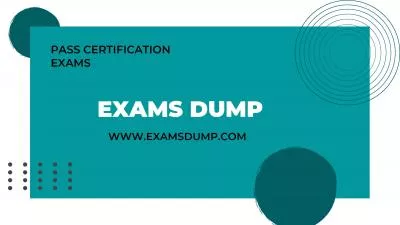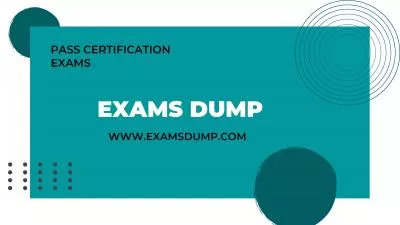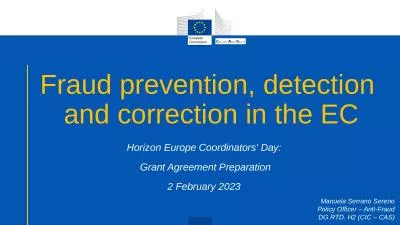PPT-Fraud prevention and detection
Author : faith | Published Date : 2022-06-07
Coordinators Day on Amendments and Reporting 27 November 2020 Manuela Serrano Sereno Policy Officer AntiFraud DG RTDB2 Common Audit Service 1 Fraud what
Presentation Embed Code
Download Presentation
Download Presentation The PPT/PDF document "Fraud prevention and detection" is the property of its rightful owner. Permission is granted to download and print the materials on this website for personal, non-commercial use only, and to display it on your personal computer provided you do not modify the materials and that you retain all copyright notices contained in the materials. By downloading content from our website, you accept the terms of this agreement.
Fraud prevention and detection: Transcript
Download Rules Of Document
"Fraud prevention and detection"The content belongs to its owner. You may download and print it for personal use, without modification, and keep all copyright notices. By downloading, you agree to these terms.
Related Documents

